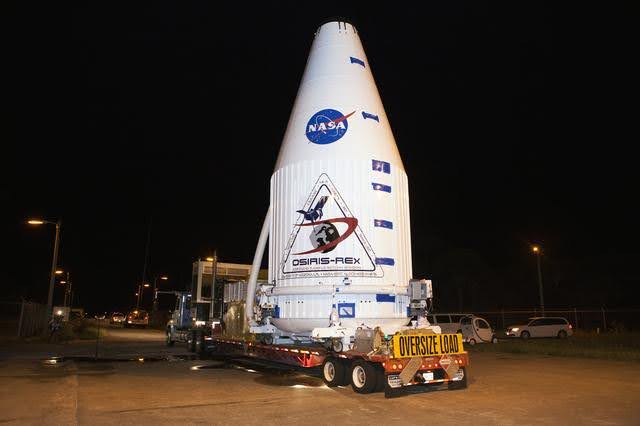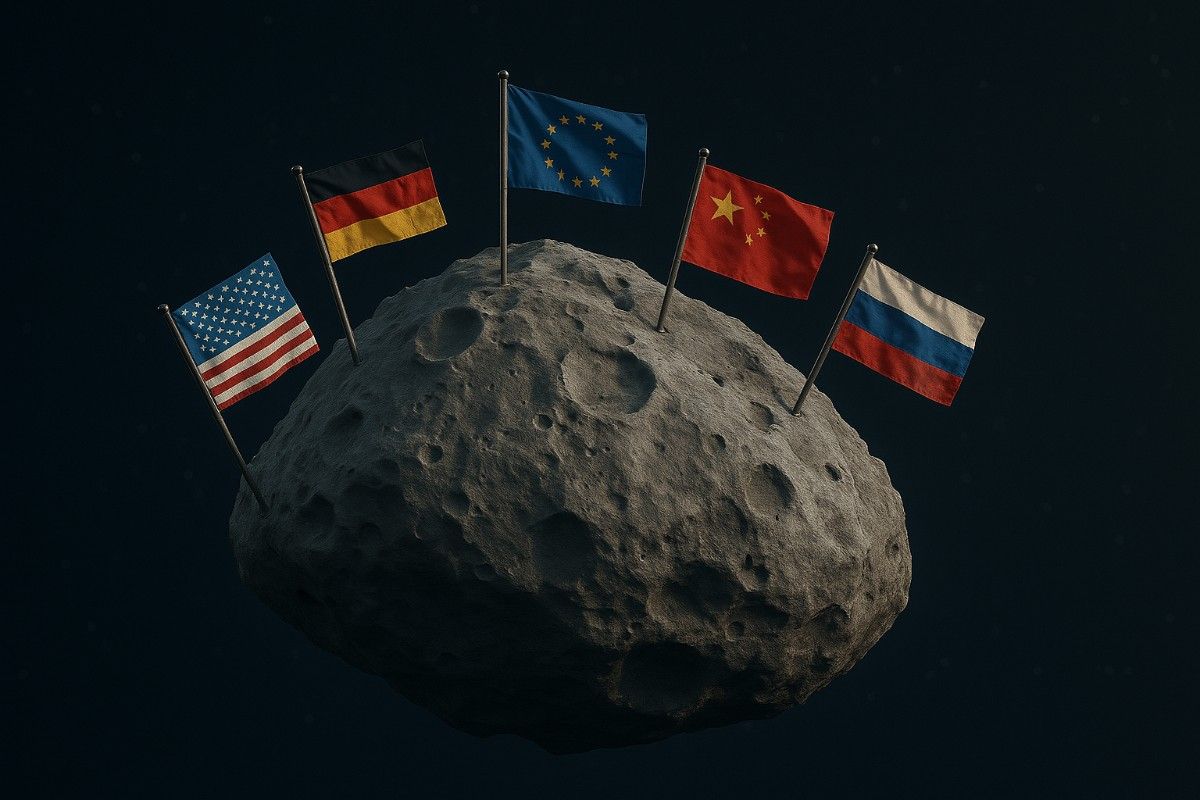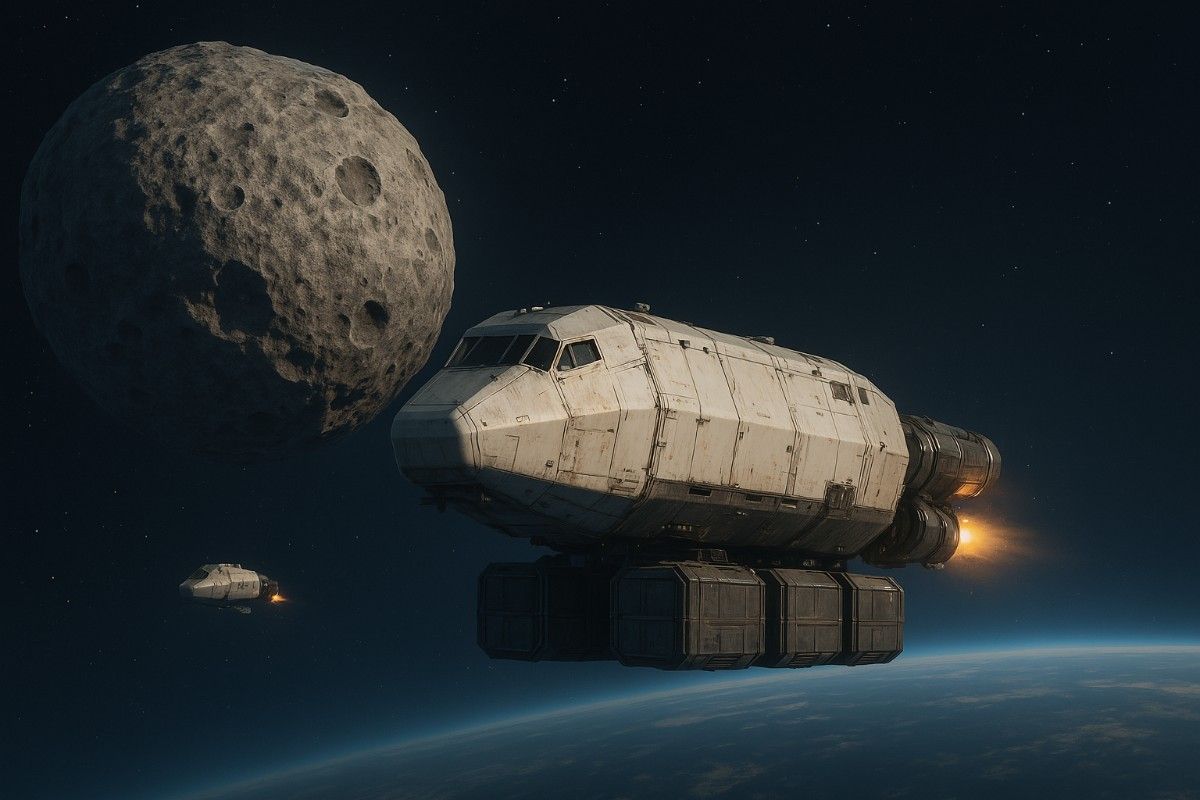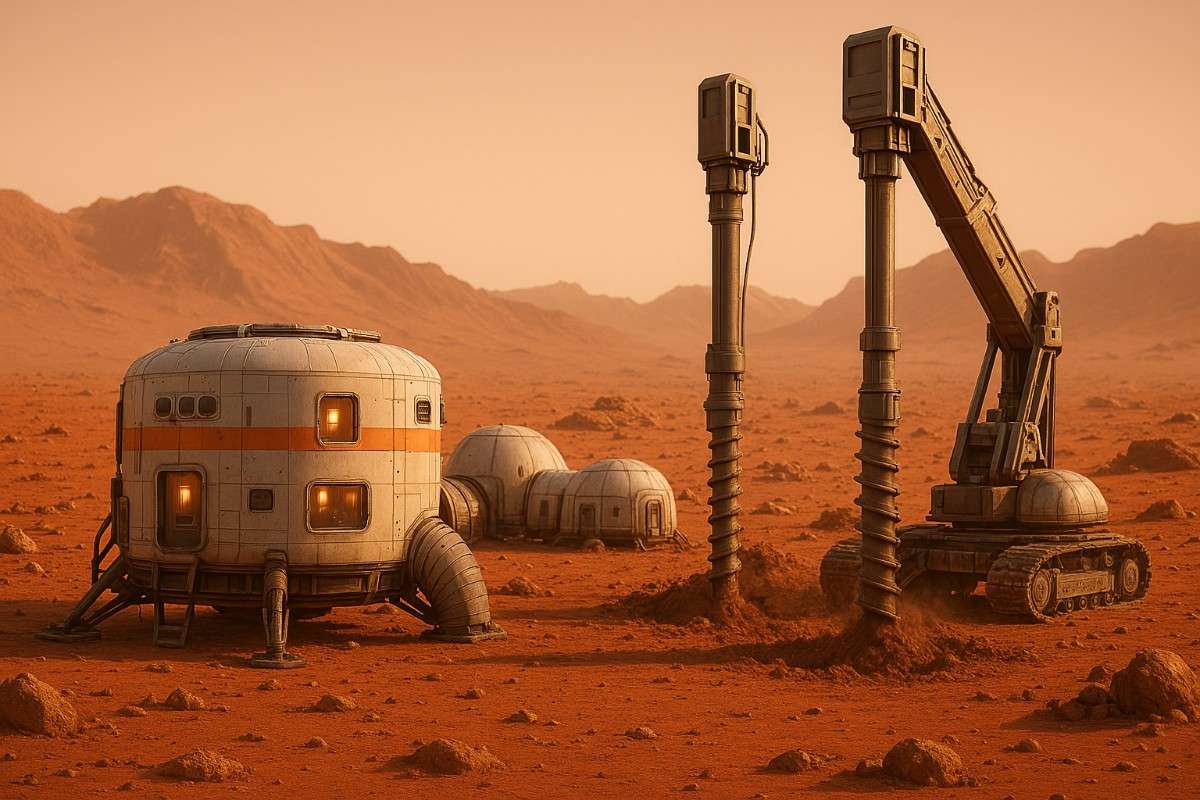Space mining isn’t just a wild idea anymore; it’s becoming real. Missions are being planned, investments are rolling in, and space agencies and private companies are getting serious about pulling valuable materials from asteroids and other celestial bodies. It’s not about science fiction. It’s about real science, economics, and how we prepare for the future.
From rare minerals hiding inside near-Earth asteroids to completely new industries developing in low-Earth orbit, space mining has the potential to change how we live and work on Earth, and far beyond. Let’s take a closer look at what’s happening, who’s involved, and what it could mean for our economies.
Why Would We Even Need to Mine in Space?

Earth is working overtime to supply the minerals we rely on every day, but the pressure is mounting. As we move deeper into the age of digital technology and electrification, we’re running into real limits. Many of the materials we need for things like electric vehicles, renewable energy tech, and smart devices are becoming harder and costlier to extract.
At the same time, traditional mining operations carry a steep environmental and social cost. Landscapes are being scarred, ecosystems disrupted, and communities displaced. The idea of turning to space for resources is less about chasing something flashy and more about solving a real problem: how to keep up with demand without pushing Earth past its breaking point.
That’s where space comes in. Not as a fantasy escape plan, but as a supplement to what we already have. Near-Earth asteroids and other celestial bodies hold massive stores of high-value materials that could be extracted with far less environmental impact. Among the most promising finds:
- Precious metals such as platinum and rhodium, critical for high-end electronics and industrial systems
- Water ice, which can be converted into fuel or life-support essentials for astronauts
- Rare Earth elements, crucial for clean energy technology, advanced batteries, and defense equipment
These resources aren’t just useful in space – they could stabilize markets and ease the strain on Earth’s supply chains. And we’re not just speculating. NASA’s OSIRIS-REx mission recently reached the asteroid Bennu, gathered samples, and is returning them home – a proof of concept that this is within reach.
As technology continues to evolve, we’re seeing the rise of prototype missions aimed at drilling, extracting, and even refining materials directly in space. What was once science fiction is now entering the early phases of real-world testing, and it could change how we think about sustainability and supply forever.
Who’s Jumping In?

Both startups and governments are stepping up to explore the potential of space mining. The excitement is no longer limited to the big names in aerospace. It’s now a playground for ambitious entrepreneurs, engineers, and investors betting on the next industrial revolution.
Let’s start with the private sector. Some of the most talked-about players include:
- Planetary Resources, one of the first companies to bring asteroid mining into the public eye. Though it was eventually acquired, it sparked global interest in off-Earth resource extraction.
- Deep Space Industries, which made early strides in developing water extraction technologies for space. The company later merged with Bradford Space, but it helped set the tone for commercial activity in space.
- AstroForge, one of the most promising new players, is aiming to prove that asteroid mining is commercially viable. They’ve already announced plans for missions that will test refining techniques directly in space.
Meanwhile, space agencies are laying the groundwork for international collaboration and large-scale missions. NASA, the European Space Agency (ESA), and China’s CNSA are all investing in technologies that could one day support full-scale mining operations on asteroids or the Moon. These agencies aren’t just looking at exploration – they’re thinking long-term, focusing on infrastructure that will make future resource extraction possible.
On the policy side, over 25 countries have signed the Artemis Accords, an agreement that lays out guidelines for responsible and cooperative behavior in space. This includes the peaceful use of space resources, transparent sharing of scientific data, and support for sustainable development beyond Earth. Even countries you might not expect, like Japan and the United Arab Emirates, are investing in space mining research.
Japan’s space agency JAXA has already completed successful sample-return missions, and the UAE is exploring partnerships with private firms. All of this shows that space mining isn’t just a scientific challenge; it’s becoming a geopolitical and economic one. The nations and companies that make early moves now could shape not only the space economy but the balance of power on Earth for decades to come.
What Could This Mean for Global Economies?

Alright, let’s get into the heart of it. What happens to our global economy when we start pulling high-value resources from space?
Entirely New Industries
Space mining could give rise to brand new industries, just like the internet created the digital economy. From the design of specialized mining equipment to in-orbit refineries and logistics systems, there’s a whole value chain waiting to be built.
Here’s what this future could actually look like: small, agile startups building robots that can dig into asteroid surfaces without floating off; modular refineries operating inside space stations to separate and process valuable metals; and specialized shuttles delivering those processed materials either to Earth or to construction sites elsewhere in space.
Even traditional mining equipment manufacturers might get involved in the action. In the early days, the market will be small, but as demand and tech progress, it could become a whole new branch of global economic growth.
Lower Costs for Building in Space
One of the biggest benefits of space mining is that we can use materials up there instead of hauling everything from Earth. This is called in-situ resource utilization (ISRU), and it could dramatically lower the cost of space exploration.
Here’s what that might mean:
- Rockets can refuel using water turned into hydrogen and oxygen
- Construction materials for Moon or Mars bases can be sourced locally
- Fewer launches from Earth = lower emissions and cost
This could make deep space exploration more affordable and frequent, opening doors to missions that would have been too expensive before.
Changes to Global Trade and Commodity Prices
Imagine suddenly having access to more platinum than we’ve ever seen on Earth. Prices would drop – good news for manufacturers, but possibly bad news for countries that rely on mineral exports.
Some expected shifts:
- Materials that are rare today could become more affordable
- Countries with mining-based economies might need to adapt
- The global balance of supply and demand could change overnight
To avoid flooding the market, companies will likely control how much they bring back. But make no mistake, as the economic impact could be massive.
More Sustainable Growth
Space mining has real potential to help us grow economically while reducing harm to the planet. Instead of destroying forests or polluting rivers, we could source materials from lifeless rocks floating in space.
In practice, this means we could do far less damage to our own planet. Mining in space would reduce the need for environmentally harmful operations here on Earth, help expand the use of green technologies by giving us better access to needed materials, and provide cleaner, more responsible ways to meet growing global demand.
It’s not a silver bullet – but it’s a powerful new tool in the push for cleaner, fairer industries.
New Rules, New Power Dynamics
Space resources won’t just be about science and tech. They’ll also be about policy and power. Who gets access? Who decides how things are shared?
Right now, no one can claim ownership of a planet or asteroid, but some countries have passed laws letting their companies own what they extract. It’s a bit of a legal gray area, and it’s only going to get more complex.
We’re going to need international agreements and space laws that cover:
- Ownership rights
- Fair use of shared resources
- Responsible behaviour in space
Without clear rules, space mining could lead to conflicts – or worse, a lawless scramble for wealth.
What’s Standing in the Way?
Of course, it’s not all green lights and go-for-launch. There are still some pretty big hurdles to get over:
Development Costs
Launching a mining mission is expensive. The tech is still evolving. And getting materials back to Earth adds a whole new layer of complexity. Right now, only a handful of missions have made it even close to that goal.
To make space mining actually work, we’ll need to solve some big technical challenges. First, we need rockets that are not only powerful and safe, but also reusable, so the cost of launching doesn’t stay sky-high. Then there’s the equipment itself. Mining tools will have to handle extreme conditions like intense radiation, zero gravity, and temperatures that swing from boiling to freezing.
Finally, we’ll need reliable systems for turning whatever we dig up into usable material, and for moving those resources where they’re needed – whether that’s Earth, the Moon, or somewhere even farther out.
Legal and Ethical Questions
Who owns what in space? Who benefits? What happens if things go wrong? These aren’t just technical problems; they’re political and ethical ones, and we need to get ahead of them before space mining takes off.
Questions to think about:
- Can smaller nations access these resources?
- How do we avoid increasing inequality?
- What role do global institutions play?
Traffic in Earth Orbit
We already have a growing issue with satellites and space debris. Add mining missions to the mix, and managing Earth orbit traffic becomes a real concern. We’ll need smart systems to keep space safe and open for everyone.
So What’s Next?

Fast forward a decade or two, and the future might start looking a lot more like the sci-fi stories we grew up with. We could see fuel stations on the Moon that make long-distance space travel easier and cheaper.
Space factories might be using asteroid metals and lunar regolith to 3D-print tools, components, or even entire structures without ever relying on Earth-based materials. And it’s not far-fetched to imagine humans living in lunar or Martian bases, using water from nearby ice deposits for drinking, agriculture, and clean solar-powered energy.
This kind of deep space exploration becomes far more practical when we’re not dragging every ounce of cargo from Earth. With local resources fueling operations, we can do more, stay longer, and build faster. And the economic ripple effect? It’s massive. We’re talking about more than just mining companies; this could kick off entire ecosystems of innovation.
From transportation to construction, from clean energy to life-support systems, every piece of the puzzle becomes a new opportunity. It’s not just about launching rockets anymore, but launching industries that could change how we think about work, resources, and our place in the universe.